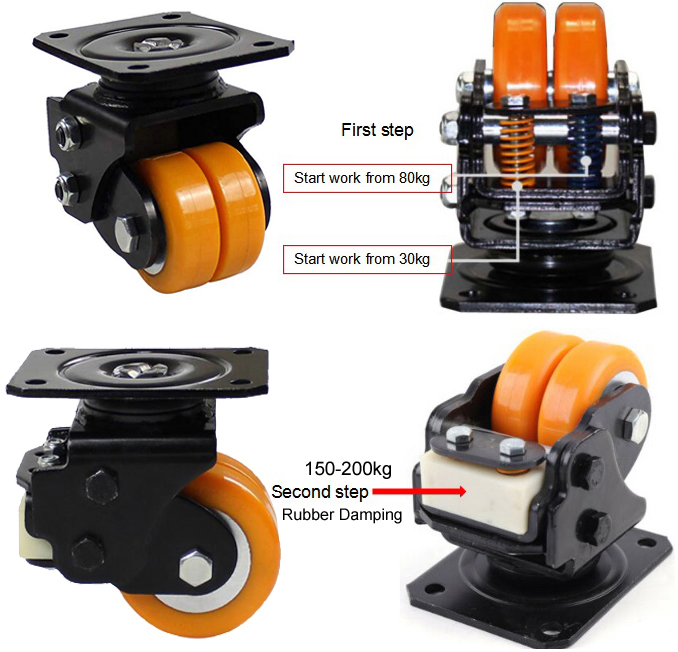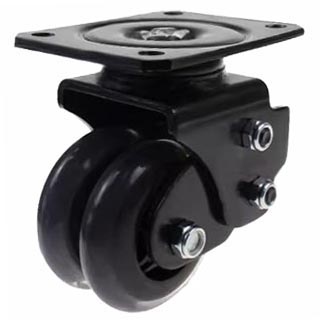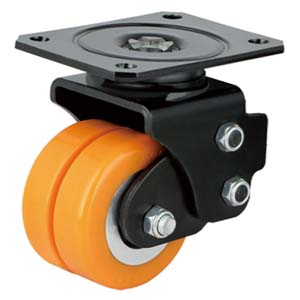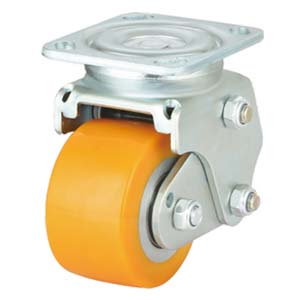Why the AGV casters need shork absorber system
Automated Guided Vehicles (AGVs) are a cornerstone of modern automated material handling systems. These vehicles are designed to transport goods in warehouses, manufacturing plants, and other facilities without human intervention, following predefined paths or dynamically navigating through an environment. The efficiency and reliability of AGVs depend significantly on their components, including the casters. One critical feature of AGV casters is the shock absorber system. This article will explain why AGV casters need shock absorber systems by exploring the various factors that influence their necessity, benefits, and implementation.
Understanding AGV Casters
Casters are the wheel assemblies that support and enable the movement of AGVs. They must be robust, durable, and capable of withstanding the loads and operational demands placed on AGVs. However, simply having strong casters is not enough; the environments in which AGVs operate often present challenges that require additional features, such as shock absorbers.
Environmental Factors and Surface Irregularities
AGVs typically operate on varied surfaces within industrial environments, ranging from smooth concrete floors to rough and uneven terrains. These surfaces can have imperfections such as cracks, bumps, and debris. When AGVs move over these irregularities, the casters experience shocks and vibrations. Without a shock absorber system, these impacts can lead to several problems:
Damage to AGV Components: Repeated exposure to shocks and vibrations can cause wear and tear on the AGV’s structural components, electronics, and payload. This leads to increased maintenance costs and potential downtime.
Decreased Stability: Unabsorbed shocks can cause the AGV to become unstable, leading to potential tipping or loss of control, especially when carrying heavy loads.
Reduced Precision: AGVs often need to stop, start, and change direction with high precision. Irregularities in the surface can affect the vehicle's ability to perform these tasks accurately if the shocks are not mitigated.
Benefits of Shock Absorber Systems in AGV Casters
Given the challenges posed by surface irregularities, integrating shock absorber systems into AGV casters offers several significant benefits:

1. Enhanced Durability and Longevity
Shock absorbers help to dampen the impact forces that casters encounter. By absorbing and dissipating these forces, the shock absorbers protect the AGV’s structural components and casters themselves from excessive stress and premature wear. This translates to a longer service life for the AGVs and reduced maintenance requirements.
2. Improved Load Stability
Shock absorbers contribute to better load stability by reducing the oscillations and vibrations that occur when the AGV moves over uneven surfaces. This is crucial for maintaining the integrity of the transported goods, especially in cases where the payload is delicate or sensitive to movement. Stable loads also reduce the risk of spillage or damage during transit.
3. Increased Operational Safety
Safety is paramount in environments where AGVs operate alongside human workers. Shock absorbers enhance the overall stability and control of the AGV, minimizing the risk of accidents caused by sudden jolts or loss of balance. This is particularly important in dynamic environments with mixed traffic.
4. Higher Precision and Accuracy
Shock absorbers facilitate smoother movement and better control over the AGV’s trajectory. This is essential for tasks that require high precision, such as positioning pallets or aligning with docking stations. By minimizing the impact of surface irregularities, shock absorbers help AGVs maintain accurate navigation and positioning.
5. Enhanced Comfort for Sensitive Payloads
Certain payloads, such as electronics, glassware, or medical supplies, are highly sensitive to shocks and vibrations. Shock absorber systems ensure that these items are transported with minimal disturbance, preserving their integrity and functionality.
Types of Shock Absorber Systems
There are various types of shock absorber systems that can be integrated into AGV casters, each with its advantages and considerations:
1. Spring-Based Systems
Spring-based shock absorbers use mechanical springs to mitigate shocks. These systems are relatively simple and cost-effective. They can handle a wide range of loads and provide consistent performance over time. However, they may not offer the same level of damping precision as more advanced systems.
2. Hydraulic Dampers
Hydraulic dampers use fluid-filled chambers to absorb and dissipate shock energy. These systems are highly effective at providing controlled damping and can be adjusted to suit specific load and surface conditions. Hydraulic dampers offer precise control but can be more complex and expensive to maintain.
3. Pneumatic Dampers
Pneumatic shock absorbers use compressed air to cushion shocks. These systems provide adjustable damping characteristics and can be fine-tuned for different operational scenarios. Pneumatic dampers offer a good balance between performance and flexibility but require a reliable source of compressed air.
4. Elastomeric Systems
Elastomeric shock absorbers use rubber or other flexible materials to absorb shocks. These systems are simple, maintenance-free, and effective at damping low to moderate impacts. However, they may not provide sufficient damping for more severe shocks or heavy loads.
Implementation Considerations
Integrating shock absorber systems into AGV casters requires careful consideration of several factors to ensure optimal performance and reliability:
1. Load Capacity
The shock absorber system must be designed to handle the maximum load that the AGV will carry. This includes considering both the static load (weight of the AGV and payload) and dynamic load (forces experienced during movement).
2. Surface Conditions
Understanding the typical surface conditions in the operating environment is crucial for selecting the appropriate shock absorber system. Smooth warehouse floors may require different damping characteristics compared to rough outdoor surfaces.
3. Speed and Acceleration
The speed and acceleration profile of the AGV influences the choice of shock absorber system. Higher speeds and rapid accelerations generate greater forces, necessitating more robust damping solutions.
4. Maintenance and Reliability
The chosen shock absorber system should be reliable and require minimal maintenance. This ensures that the AGV can operate continuously with minimal downtime. Considerations include the ease of replacement, adjustment, and availability of spare parts.
5. Integration and Compatibility
The shock absorber system must be compatible with the existing caster design and the overall AGV architecture. This includes ensuring that the dimensions, mounting points, and weight distribution are appropriately accounted for.
Case Studies and Real-World Applications
Example 1: Warehouse AGVs
In a large distribution center, AGVs are used to transport goods between storage areas and shipping docks. The floor surfaces are generally smooth but have occasional cracks and debris. By integrating pneumatic shock absorbers into the casters, the AGVs can navigate these irregularities smoothly, maintaining load stability and reducing wear on the vehicles.
Example 2: Manufacturing Plant AGVs
In a manufacturing plant, AGVs transport heavy machinery parts across various workshop areas with mixed surface conditions. Hydraulic dampers are chosen for their ability to handle heavy loads and provide precise damping. This ensures that the AGVs can move swiftly and accurately without compromising safety or stability.
Example 3: Hospital AGVs
In a hospital setting, AGVs are used to deliver medical supplies and equipment. The floors are smooth, but the payloads are often sensitive and require gentle handling. Elastomeric shock absorbers are employed to provide adequate damping for the relatively light loads, ensuring safe and smooth transportation of delicate items.
Shock absorber systems are a critical component of AGV casters, addressing the challenges posed by surface irregularities and enhancing the overall performance, safety, and reliability of automated guided vehicles. By absorbing and dissipating shock forces, these systems protect the AGV’s components, improve load stability, increase operational safety, and ensure precision and accuracy in navigation. Various types of shock absorbers, including spring-based, hydraulic, pneumatic, and elastomeric systems, offer tailored solutions for different operational needs. Careful consideration of factors such as load capacity, surface conditions, speed, and maintenance requirements is essential for successful implementation. In real-world applications, shock absorber systems have proven to be invaluable in optimizing AGV performance across diverse environments, from warehouses and manufacturing plants to hospitals and other specialized facilities.




 English
English Spanish
Spanish German
German Russian
Russian Arabic
Arabic Portuguese
Portuguese Italian
Italian French
French Hebrew
Hebrew Turkish
Turkish